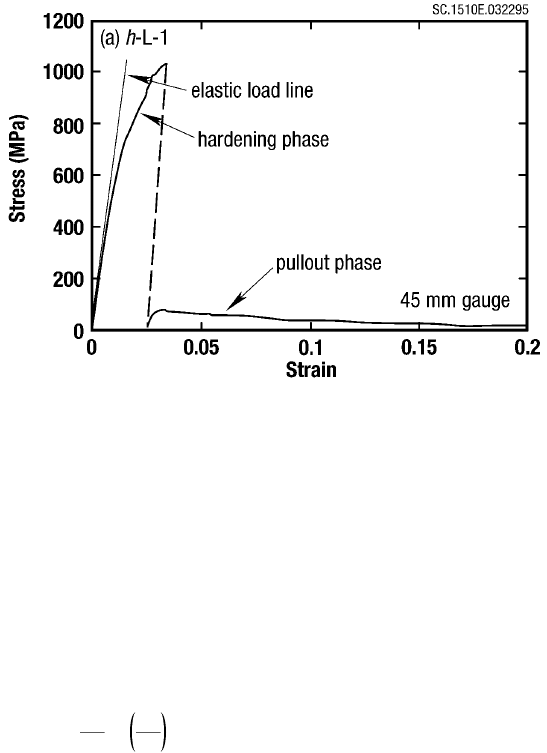
FAILURE MECHANISMS
specimens with gauge lengths of 20-30 mm. All the primary load bearing tows have failed
well before this strain. Thus the composite possesses mechanisms for transferring loads
around failure sites during substantial further straining. It is believed that the key factors are
tow waviness or other irregularities and the clamping effect of the interlock tows, which act
together to create a lockup effect which restricts sliding displacements of failed tows
[4.22]. Because loads near the peak load (~ 1 GPa) are sustained over nonlinear
displacements of ~ 1 mm, the work of fracture of interlock weaves can exceed 1 MJ/m
2
.
Figure 4-7. Stress-strain data for a 3D interlock weave tested in uniaxial tension
aligned with the stuffers (from [4.22]).
4.4 Delamination under Through-Thickness Tension (Curved Structures)
Through-thickness tension arises in curved panels whenever the sense of in-plane
moments creates in-plane compression,
σ
(o)
, on the outer surface of the panel (Fig. 4-8 and
[4.26]). For polymer composites, the maximum magnitude of the tensile stress,
σ
o
, which
occurs near the panel’s midplane, can be written
(4.3)
where h is the half-thickness of the panel, r
m
is its median radius, and
η
is a dimensionless
function given approximately by
η
≈ 1 + 0.6h/r
m
+ (h/r
m
)
2
[4.27,4.28].
In the presence of a delamination crack of length 2a, which may be a pre-existing
flaw or damage induced by impact, the stress
σ
(o)
will cause failure if it exceeds the critical
critical value,
σ
1
, for delamination crack growth. Since
σ
1
falls as a
-1/2
, the critical value of
